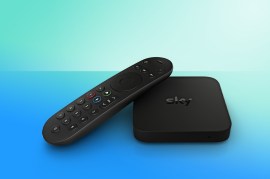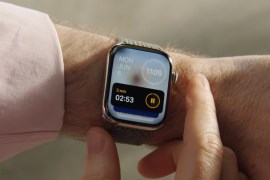Nokia Lumia 1520 review
The biggest Windows Phone on the block has a stunning 6in screen and city-levelling processing power. But it's what it does with them that really counts [updated with video]
When it comes to smartphones, size matters.
It dictates a smartphone’s ergonomics, user-friendliness and, to a degree, capabilities. And as Samsung has proved with its wildly successful phablets, lots and lots of people think bigger means better.
The 1520 is certainly big. In fact, it’s a big list of big firsts for Nokia, and for Windows Phone.
It’s the first full HD WinPhone. It’s the first WinPhone phablet, its 6in screen dwarfing even the burliest flagship Androids.
There’s more. It’s the first WinPhone to sport the excellent quad-core Snapdragon 800 processor, which puts it head and shoulders above its peers in the number-crunching stakes. It also happens to pack one of those excellent PureView cameras.
On paper, then, the 1520 is everything a big-screen smartphone needs to be, plus a whole lot more besides. But with Windows Phone in the driving seat, it’s clear that size isn’t everything – it’s what you do with it that counts.
That screen…
The Lumia 1520’s 6in screen is nearly big enough to have its own gravitational pull. In fact, it’s a little too big for our tastes (and our none-too-puny fingers), but if you’re in the 6in+ phablet market you’ll know what you’re getting yourself into – a smartphone that you’ll need two hands to operate nine times out of ten, in exchange for a more pleasant viewing experience.
Sun-blotting size aside, the 1520’s IPS LCD screen is, in a word, delicious.
It’s the first screen running Windows Phone to sport a 1920×1080 full HD resolution (something the Android competitors have had for a couple of years), and our retinas lapped up each and every pixel.
Colours are bright and punchy, and despite the departure from the normal AMOLED screens used in previous Lumia devices, blacks remain deep, dark and true, on a par with the blacks offered by the LG G2‘s outstanding LCD display.
It also performs well in bright sunlight, thanks to its ability to recalibrate based on ambient light conditions, and can handle use with gloves pretty well – ideal for crisp, bright winter days. Viewing angles are excellent, and the colourful Windows 8 live tiles seem to pop off the screen, such is its clarity.
Naturally, then, web browsing and videos look stunning, and any other smartphone (bar the ridiculously large 6.4in Sony Xperia Z Ultra) will seem tiny in comparison.
Whites could also be a tad whiter, but overall this is up there with the best smartphone screens we’ve ever had the pleasure of ogling. It’s also by far the best screen to ever grace a Nokia device, let alone a Windows Phone 8 handset.
But…
Is bigger necessarily better?
The Lumia 1520 feels a lot like the HTC One Max. Both appear to exist primarily as a response to the Samsung Galaxy Note 3, the leader in the super-sized smartphone market.
While the extra screen real estate of the 1520 is very much appreciated when browsing the web, watching movies and glancing through more live tiles than was possible in the past, there’s no addition to the Windows 8 OS which takes any specific advantage of the extra space on offer. And that’s one of the 1520’s main failings.
The Galaxy Note 3 (and even the Galaxy S4) has Multi-View, a feature which lets you run selected apps side by side. It’s a feature that’s sorely missing from the 1520. Windows 8 and even the Xbox One both offer the ability to ‘snap’ apps to the side of the screen, letting you deal with two things simultaneously, and it’s a shame that this capability hasn’t ported itself over to the Lumia 1520.
The Note 3’s excellent S Pen stylus also sets it apart, offering impressive handwriting recognition as well as pressure sensitivity for doodlers to get creative with. Sony’s Xperia Z Ultra will let you scribble away on its screen with a regular biro. For now, the 1520 remains a stretched-out Lumia Windows Phone 8 device, with no unique functionality to make it stand out against the existing phablet competition.
A solid slab of loveliness
As with all Lumias, the 1520 is one gorgeous slice of tech. We prefer the matte yellow version to the cheaper-looking glossy red model, but both are solid and well finished.
It’s a joy to hold, and with its micro-drilled grilles and perfectly chamfered edges feels more premium than the plastic Galaxy Note 3 or even the all-metal HTC One Max. The almost flush-mounted side buttons can be a chore to find at first, but we’re sure you’ll get used to feeling them out.
While it lacks the big camera bulge found on the Lumia 1020 (it has a smaller sensor than that device), its large screen means its got a massive footprint, and unless you’re still wearing combat pants, you’ll definitely be aware of it in your pockets. Indeed, you can expect an inch or so of yellow to poke out of all but the roomiest slacks.
The 1520 doesn’t offer a removable battery, you can upgrade the storage via a microSD card slot, which is located right next to the nanoSIM slot. Good show, Nokia.
Nokia Lumia 1520 specs
DimensionS: 162.8 x 85.4 x 8.7 mm
Weight: 209g
Screen: 6in 1080 x 1920 pixels, (367 ppi) IPS LCD
Card slot: microSD, up to 64 GB
Internal memory: 32 GB
NFC: Yes
Camera: 20 MP, 1/2.5” sensor size, PureView technology
Secondary: 1.2 MP, 720p@30fps
Video: 1080p@30fps, video light, stereo sound rec.
OS: Microsoft Windows Phone 8 Black
CPU: Qualcomm MSM8974 Snapdragon 800 quad-core 2.2 GHz
RAM: 2GB
Battery: Non-removable Li-Ion 3400 mAh
Windows Phone 8 and the attack of the apps
We might as well get this out of the way now. If you’re an app enthusiast, the Lumia 1520, or any Windows Phone 8 device for that matter, isn’t yet for you.
There’s simply no comparison between the Windows Phone 8 store and the Google Play Store and App Store on Android and iOS, and those platforms remain first on the list for app developers embarking on new projects.
The lack of a proper YouTube app is also almost unforgivable in this day and age, and life-saving (well, night-saving) apps such as City Mapper and imaginative indie games such as Device 6 are sorely missing. But at least things are improving.
Windows Phone 8 users now have Spotify, Waze, Instagram and Vine to choose from the A-list app roster, and there are some quality games available including Asphalt 8 and the superb Halo: Spartan Assault.
The Live Tile notifications are as fun and useful as ever, letting you see what’s going on in your social and messaging world at a glance, and the larger screen means you can cram more on at once, turning the 1520’s home screen into a Clapham Junction of live information.
What is missing from the Windows Phone 8 experience, though, is a quick-settings dropdown menu like Android and iOS’ notification centres.
Windows Phone 8 also feels convoluted at times, forcing you to go through several menus and button taps before carrying out something as simple as turning Wi-Fi on and off.
Its keyboard, however, remains one of the best stock touchscreen keyboards we’ve ever used, and thanks to the huge screen size, miss-hits are almost eradicated.
Being able to double-tap the screen LG G2-style to wake the display is also a nice touch, though you can’t repeat that action to turn it off.
Camera: slow to start, but worth the wait
While it might not have the insane 41MP sensor of the Nokia Lumia 1020, the 1520 still packs in a 20MP sensor which, thanks to PureView technology, offers up to 2x lossless zoom.
Pictures taken with the 1520 are excellent by any standards, with snaps showing off bags of detail and accurate colour reproduction. Get a 1520 and you can leave your compact camera at home – fortunate, as you won’t have space in your pocket for it any more.
No other phablet comes close camera-wise. Indeed, it’s second only to the Lumia 1020 when it comes to image quality, and somehow manages to fit its oversized sensor and optics in without resorting to an unsightly bulge.
Like the LG G2 – itself an excellent camera phone – the 1520 also has mechanical optical image stabilisation (OIS), which should result in clearer low-light shots. Head-to-head with the G2 in a dark room, the 1520 is way out in front, with brighter, more detailed results, partly thanks to the dual LED flash in place of the G2’s single offering.
The sample shot above was taken with the 1520 in a very dark room, and the detail on display is very impressive indeed.
Nokia’s Pro Cam camera app is also superb, serving up an intuitive control system which lets you change every aspect of your shots from exposure to white balance, and everything in between.
It’s a shame, then, that despite the dedicated shutter button which can launch the camera app, it’s sluggish to open up. It can also be quite slow in between shots, especially if you’re saving snaps in the uncompressed raw DNG format (although, to be fair, only PureView phones are even capable of this at the moment).
It might not sound like much, but even a tiny delay could result in the difference between a perfect shot and a missed opportunity.
Power trip
The Lumia 1520 is up there with the most powerful Android phones currently available, thanks to its quad-core Qualcomm Snapdragon 800 processor and 2GB of RAM.
Windows Phone 8 has always run fast on previous Lumia devices, but if it ran any faster than it does on the 1520, it would almost certainly catch fire.
Stuttering and lag just aren’t in the 1520’s vocabulary. 3D games like Asphalt 8 and Halo: Spartan Assault run fast and smooth no matter what else is grinding away in the background. Web pages load almost instantly and scroll without any tearing, and apps load faster than on any other WinPhone device we’ve used. It would be great to see some apps optimised to tax the 1520’s innards, because you can guarantee that they’d be impressive.
Battery life: par for the course
Despite its mammoth 3,400mAh battery, you will still find yourself having to charge the 1520 every night, thanks to its power-sucking 6in screen.
Having said that, commuters will be happy to hear that the battery only dropped by nine percent after an hour of watching a movie with Wi-Fi on and the screen at medium brightness. And, like many other plastic-backed Lumias, the 1520 will charge wirelessly with a Qi-compatible charging pad.
Verdict
The 1520 is the biggest, most powerful Windows Phone to date, and continues Nokia’s legacy of pushing the Windows Phone envelope.
While it might not have the large sensor of the Lumia 1020, its camera is still hugely impressive, producing shots that are good enough to lay your compact cam to rest.
Its huge 6in screen is superbly bright and clear, even in daylight, and Windows Phone 8 runs faster than a jetpack-wearing cheetah.
But Windows Phone 8’s app curse, coupled with a lack of imagination from Nokia to take advantage of the largest screen to hit a Windows Phone device to date, mean that the 1520 isn’t yet worthy of a five star rating.
Still, it’s a sign of great things to come. Put the 1520’s insides and screen resolution into the 1020’s successor, and you’d have the most compelling Windows Phone handset to date.
Stuff Says…
An outstanding piece of phablet hardware with a phenomenal screen, sorely hampered by Windows Phone’s lack of apps
Good Stuff
Massive, bright and clear display
Impressive camera with fantastic low-light performance
Bristling with power
Top-notch build quality
Bad Stuff
Apps. Or rather, the lack of them
No special treats to make the most of the big screen
Camera can be slow to shoot



